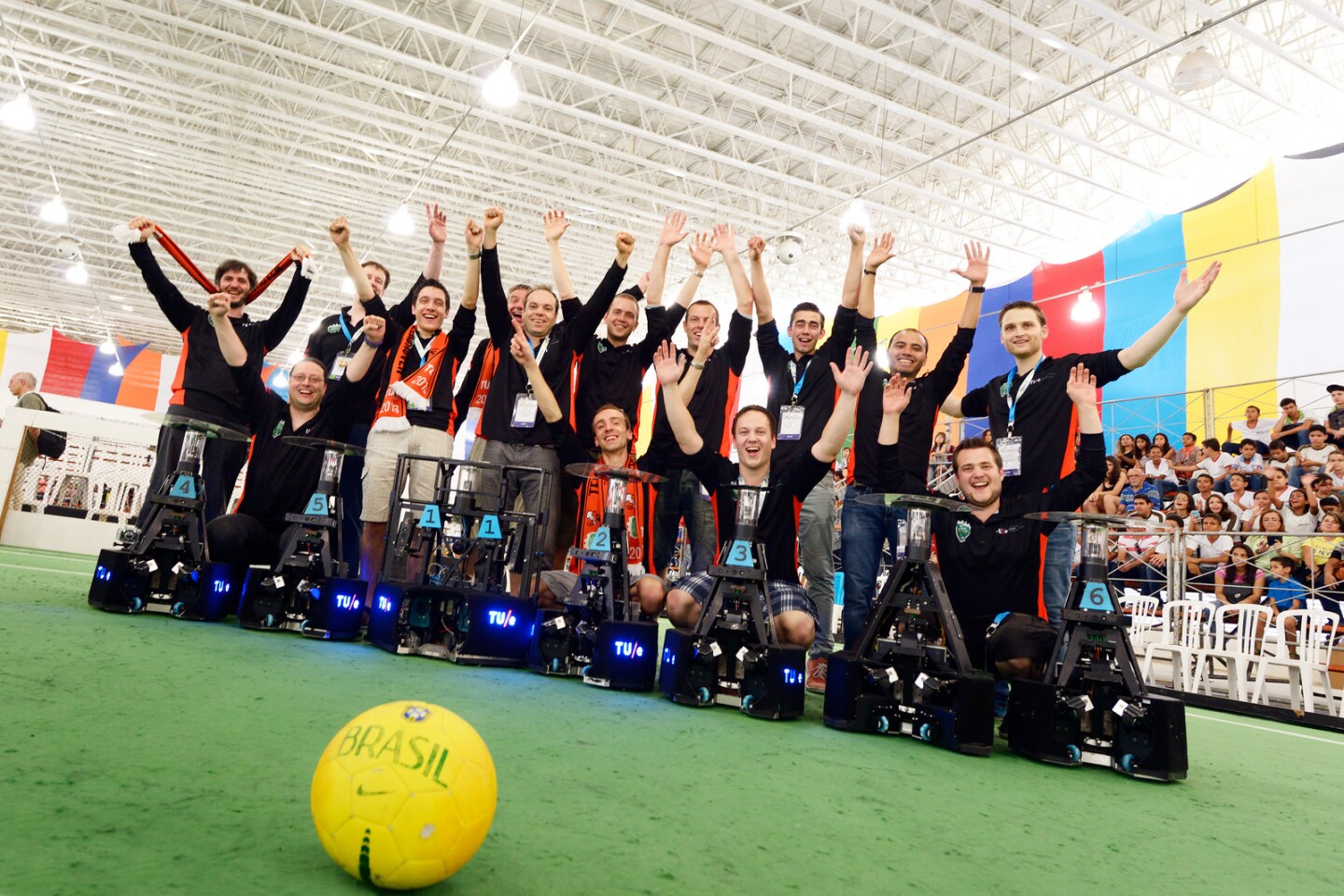The World Cup may have finished a few weeks ago, but there was another one played in Brazil just last week. The annual RoboCup competition was held in João Pessoa, including the robot soccer World Cup.
RoboCup was founded in 1997. Previous tournaments have seen the release of an open-source hardware platform to encourage new competitors and a robot dancing Gangnam Style. The competition was set up with the goal of creating a robot soccer team that was capable of beating the FIFA World Cup champions by 2050.
According to RoboCup, its soccer strand has contributed to a number of robotics research standards since its inception. The games have five players per side and the robots must be fully autonomous. The only in-game human interference comes from the referee. Since being set up, RobCup has expanded to include other fields of competition.
In addition to small, middle-size, standard and humanoid soccer leagues, robots can now compete in categories for rescue (testing robots in simulated human rescue scenarios), home (testing the abilities of robots to assist in home scenarios) and work (testing the abilities of robots to assist in workplace scenarios). RoboCupJunior, meanwhile, provides young people with a means of pitting their robotics skills against each other.
This year's middle-size robot soccer World Cup was won by Eindhoven University of Technology (TU/e), whose team beat the University of Beijing 3-2. The TU/e robot soccer team was founded in 2005. Students, staff members and alumni work on projects all year round and at evenings and weekends. TU/e has competed against the University of Beijing in two previous robot soccer World Cup Final games, in 2011 and 2013, but lost both. TU/e says the Chinese robots are known for their speed and strength, while its own robots focus on technical combination play.

Talking to Gizmag, TU/e team captain Robin Soetens explained some of the technologies used in the team's soccer robots. The robots are powered by an internal, Wi-Fi-connected PC. They move about on three omni-directional wheels and use an industrial camera paired with a parabolic mirror to see in 360 degrees up to a distance of 6 meters (20 ft). Ball dribbling capability is provided using two actuated wheels on levers and the robots use large solenoids driven by capacitors to shoot.
"Defensively our robots guard the opponent with the ball, and block passes to its team-mates," says Soetens. "The goalkeeper has additional sensing equipment to detect shots in 3D. It uses two RGB-D cameras and a fish eye view camera with a custom-designed, field-programmable gate array (FPGA) board. Once high balls are detected it moves its rack to prevent them from entering the goal."
Detailed design plans of the TU/e robot are available under an open hardware license. The full list of RoboCup 2014 winners is available on the competition website.
The video below shows the highlights of the middle-size robot soccer World Cup Final. The commentary is in Dutch, but you'll get the idea.
Source: TU/e









